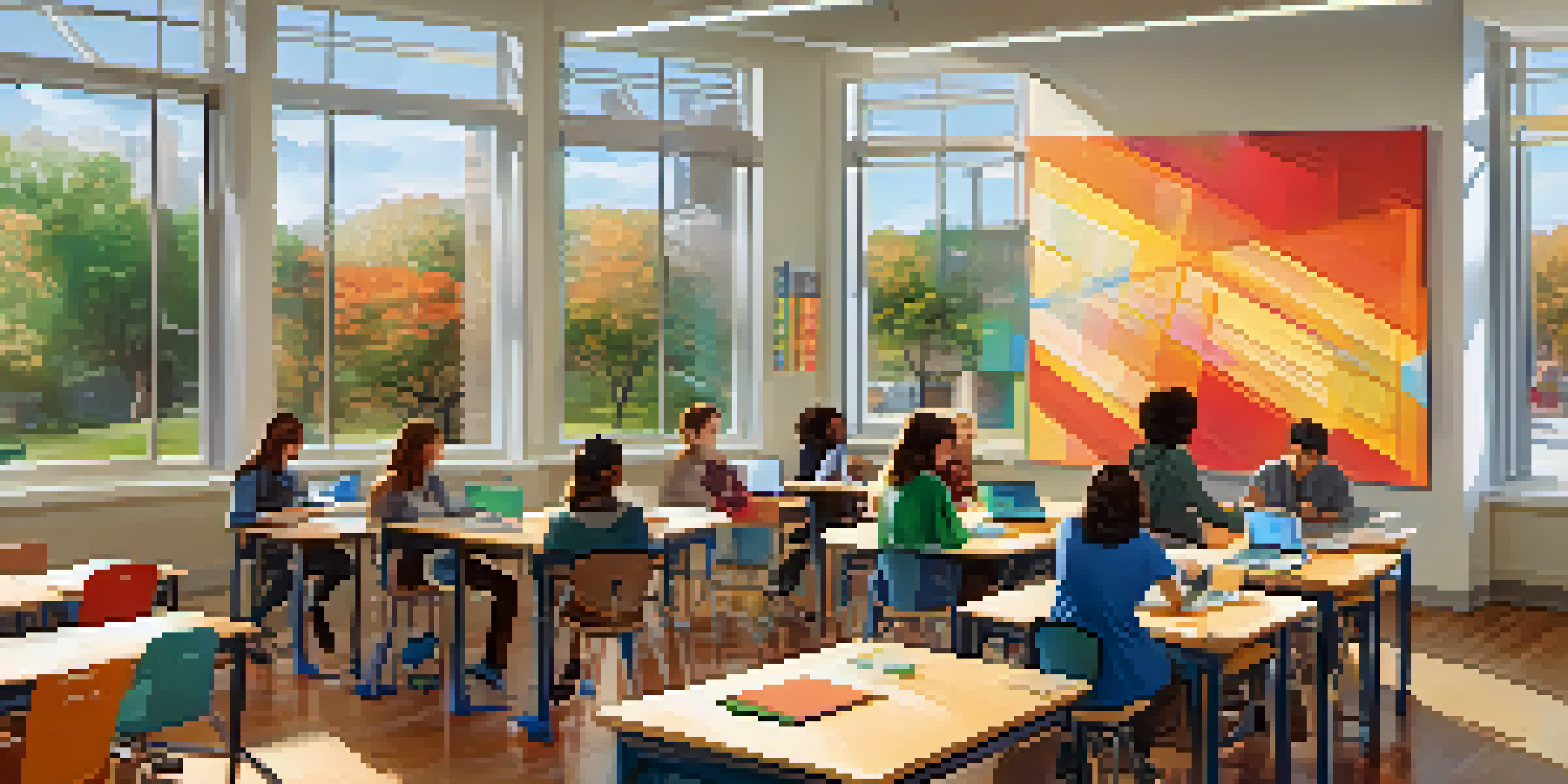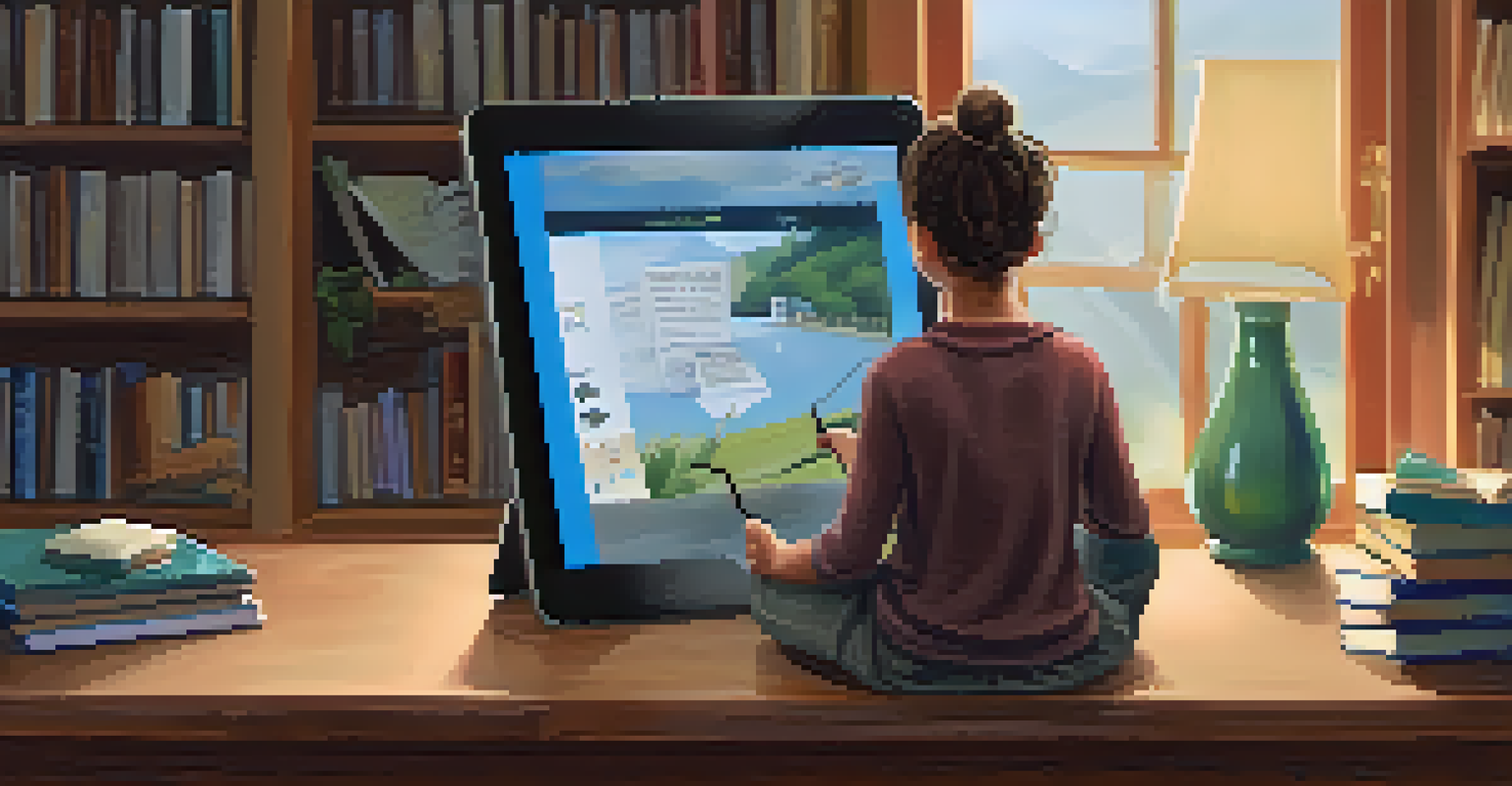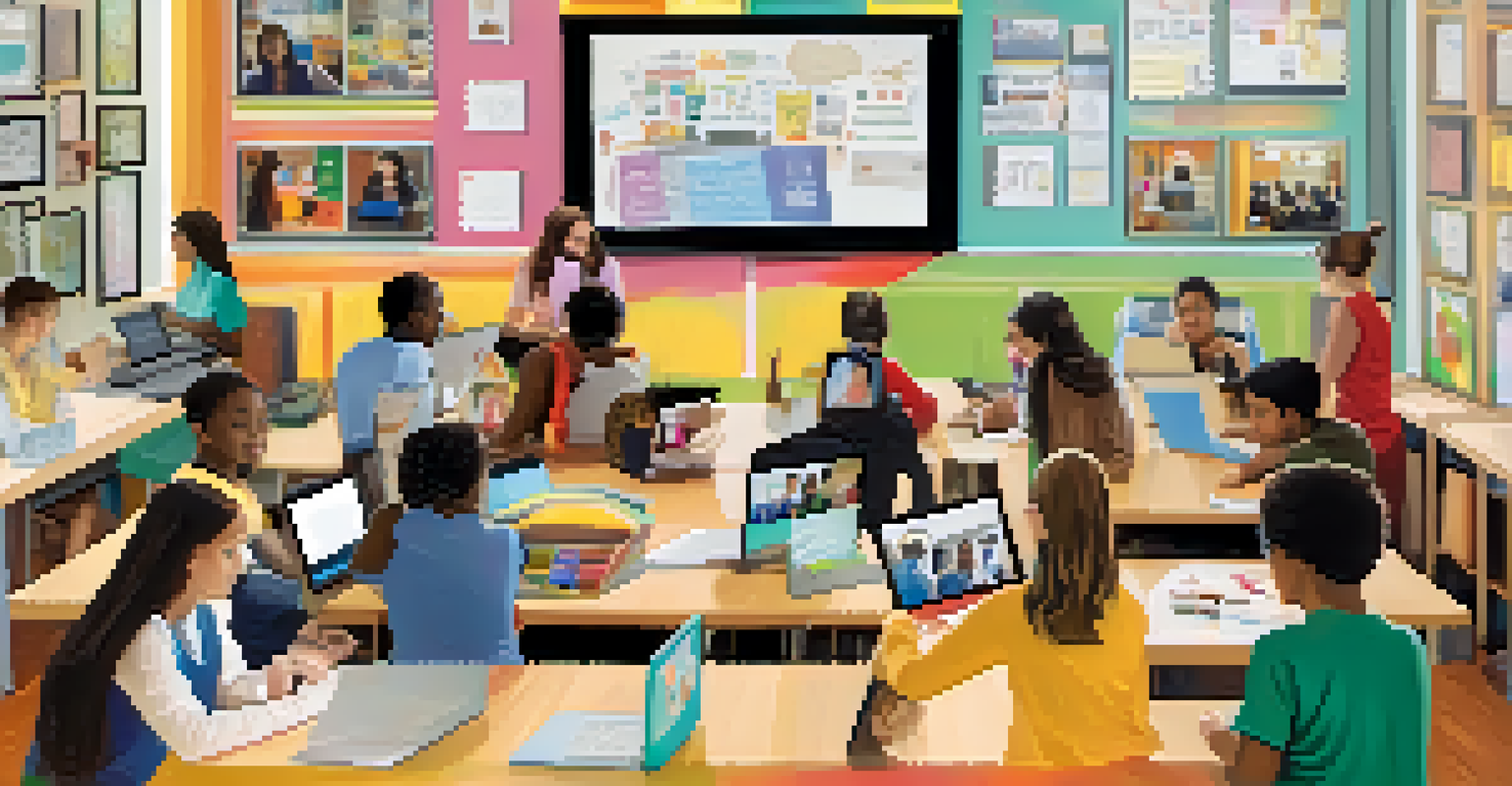Exploring Blended Learning: Models and Outcomes in Education

What is Blended Learning? A Simple Overview
Blended learning is an educational approach that combines traditional face-to-face classroom methods with online learning. This hybrid model seeks to leverage the best of both worlds, allowing for a more personalized and flexible learning experience. Imagine a classroom where students can engage with their peers and teachers in person, while also having the freedom to explore resources online at their own pace. This method not only caters to different learning styles but also prepares students for a tech-savvy future.
Blended learning is not just a trend; it's a revolution in education, combining the best of face-to-face and online learning to enhance student engagement.
In essence, blended learning creates a dynamic environment where instructors can utilize various tools and techniques to enhance the learning process. For instance, teachers might assign online modules that complement in-class discussions, reinforcing students' understanding of the material. By blending these two modes, educators can foster a more engaging and interactive experience.
Additionally, blended learning can be adapted for various educational settings, from K-12 to higher education. With its versatility, this approach is becoming increasingly popular as schools and universities strive to meet the needs of diverse student populations.
The Different Models of Blended Learning Explained
Blended learning isn't a one-size-fits-all solution; it encompasses several models tailored to different educational contexts. One popular model is the 'flipped classroom,' where students review content at home through videos or readings, freeing up classroom time for discussions and hands-on activities. This approach allows for a more interactive and engaging learning environment, as students arrive prepared to delve deeper into the subject matter.

Another model is 'rotation,' where students alternate between online and face-to-face learning in a structured schedule. This might involve spending part of the week in a physical classroom and the other part engaging with interactive online modules. Such a rotation helps balance direct instruction with independent learning, promoting self-directed study habits.
Blended Learning Combines Best Methods
This educational approach merges traditional classroom instruction with online learning, providing a more personalized and flexible experience.
Lastly, the 'enriched virtual' model offers a fully online experience complemented by occasional in-person sessions. This model suits students who thrive in a flexible learning environment, allowing them to complete the majority of their coursework online while still benefiting from personal interaction when needed.
Benefits of Blended Learning for Students
One of the most significant advantages of blended learning is the increased flexibility it offers students. With the ability to access course materials online, learners can study at their own pace, revisiting complex topics whenever necessary. This flexibility not only accommodates different learning styles but also allows students to balance their educational pursuits with other commitments, such as work or family.
The future of education is not in the classroom alone; it's about creating flexible learning environments that cater to individual needs.
Moreover, blended learning fosters a sense of ownership over one's education. Students can take charge of their learning journey, setting goals and tracking their progress through various digital platforms. This empowerment can lead to higher motivation levels and a more profound engagement with the material.
Furthermore, the integration of technology in blended learning prepares students for the digital world. As they navigate online resources and collaborate with peers through virtual platforms, they develop essential skills that are increasingly valued in the modern workforce.
How Educators Benefit from Blended Learning Models
Educators also reap numerous benefits from implementing blended learning models in their classrooms. One major advantage is the ability to tailor instruction to meet the diverse needs of their students. By utilizing online resources, teachers can provide differentiated learning experiences, ensuring that all students can thrive regardless of their starting point.
Additionally, blended learning allows instructors to gather valuable data on student performance more effectively. With various online assessments and tracking tools, educators can monitor progress in real time, identifying areas where students may need extra support. This data-driven approach enables targeted interventions, ultimately improving learning outcomes.
Flexible Learning Empowers Students
Blended learning allows students to study at their own pace, fostering ownership of their education and enhancing motivation.
Lastly, blended learning encourages collaboration among educators. Teachers can share resources, strategies, and insights through online platforms, fostering a community of practice that enhances professional development. This collaboration can lead to more innovative teaching methods and a stronger support network for educators.
Challenges and Considerations in Blended Learning
While blended learning offers many benefits, it is not without challenges. One significant hurdle is ensuring all students have access to the necessary technology and reliable internet connections. In some cases, disparities in access can create inequities in learning opportunities, highlighting the need for schools to address these gaps.
Moreover, educators must be adequately trained to implement blended learning effectively. This can involve professional development in both technology tools and pedagogical strategies that best support this model. Without proper training, teachers may struggle to integrate blended learning seamlessly into their curricula.
Lastly, striking the right balance between online and face-to-face instruction can be tricky. Educators need to carefully design their courses to ensure that both components complement one another, rather than compete for students' attention. This requires thoughtful planning and ongoing adjustments based on student feedback and performance.
Real-World Examples of Successful Blended Learning
Numerous schools and universities around the world have successfully implemented blended learning, showcasing its potential. For instance, a high school in California adopted a flipped classroom model, allowing students to watch recorded lectures at home. The extra classroom time was then spent on group projects and discussions, leading to improved engagement and understanding of complex topics.
In higher education, many universities have embraced blended learning to enhance their course offerings. A well-known university in the Midwest integrates online modules into their traditional courses, allowing students to explore topics in depth before attending lectures. This approach has resulted in higher satisfaction rates among students, who appreciate the flexibility and accessibility of their courses.
Educators Benefit from Adaptability
Teachers can tailor instruction to diverse student needs while utilizing data-driven insights to improve learning outcomes.
Additionally, some organizations offer blended learning for professional development, combining online training with in-person workshops. Participants find that this model not only saves time but also allows for immediate application of skills learned online in a collaborative environment.
Future Trends in Blended Learning to Watch
As technology continues to evolve, so too will blended learning models. One emerging trend is the incorporation of artificial intelligence (AI) into educational platforms. AI can provide personalized learning experiences, adapting content to meet individual student needs and preferences, thereby enhancing the effectiveness of blended learning.
Another trend is the rise of microlearning, which focuses on bite-sized content that is easy to digest. This approach aligns well with blended learning, as students can engage with shorter online modules before coming together in the classroom for deeper discussions or activities. Microlearning caters to the busy lives of students while still promoting mastery of concepts.

Finally, we may see a greater emphasis on social emotional learning (SEL) within blended environments. As educators recognize the importance of addressing students' emotional well-being, integrating SEL into blended learning can create a more holistic educational experience that supports both academic and personal growth.